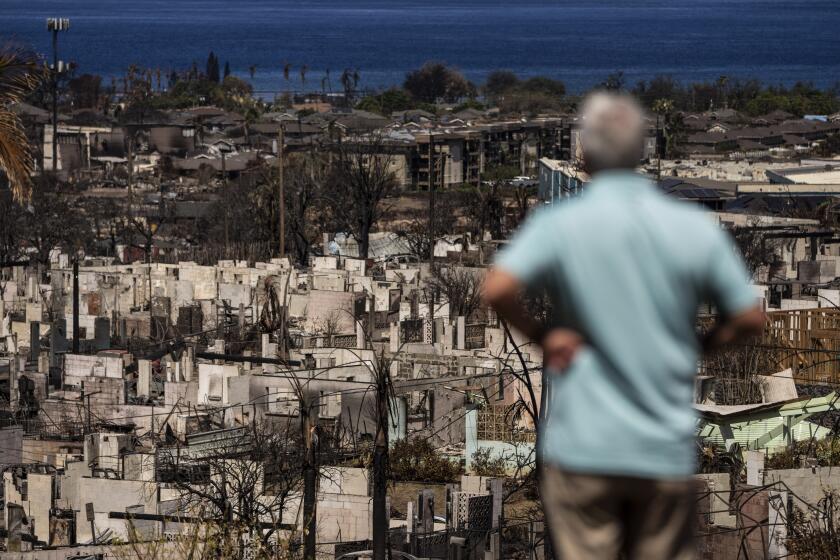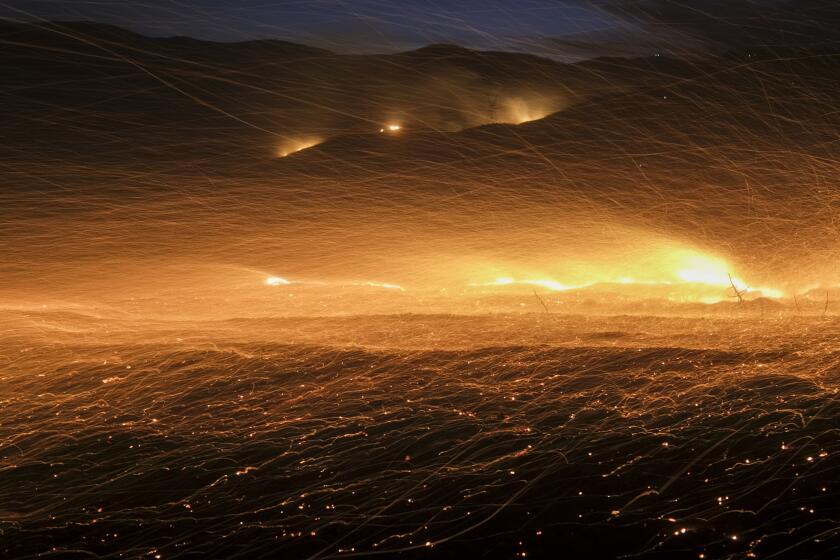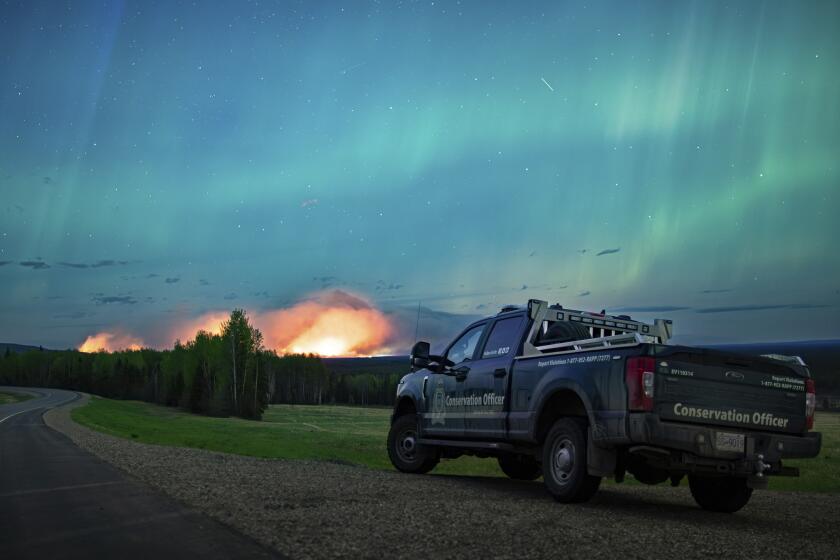After the Flames: Death or Rebirth?
Fires are raging across the West. Grim-faced federal officials report that more than 4.7 million acres have already burned, twice the 10-year average. President Bush declared most of Colorado a disaster area after Gov. Bill Owens said the burned region suffered a “nuclear winter.” This news hits outdoors-loving Americans in the gut. We assume all natural resources in the paths of the fires are lost: old-growth stands, trout pools, prairies--all destroyed.
Are they? We don’t know. Worse yet, no one knows.
Although federal agencies keep a tally of the acres within the containment lines that firefighters build to halt the spread of each blaze, what happens inside the fire lines is a bureaucratic void. Beyond a handful of the most damaging fires, officials do not track whether forest stands were devastated or improved by fire, whether watersheds were hurt or helped, wildlife habitat destroyed or enhanced.
We need to know. Fire plays a crucial role in most Western ecosystems. At a time when the public goal is to restore forests to a more natural state, understanding where fires destroy and where they revitalize ecosystems should be shaping management policies. It should be used to help firefighters decide which wildfires to put out and which to just monitor.
Without sound scientific information about what happens inside the fire lines, we have no way to evaluate the effects on ecosystems or the threats to communities. That leaves us at the mercy of politicians who cater to the immediate demands of their constituents, not the long-term needs of natural resources.
In our ignorance, we assume that everything within the fire perimeter is ruined. It hardly ever is.
The northeastern California Storrie fire started Aug. 17, 2000, and burned 56,000 acres near the Feather River. Tearing up the steep canyon slopes, it romped through stands that had been heavily logged and through pristine areas where no roads had ever been built. Loggers and environmentalists alike bemoaned the devastation.
My on-the-ground exploration revealed far less catastrophe and far more complexity. Some forest stands within the Storrie fire were truly scorched--the heat so intense it cooked the soil, thwarting most new growth for years. Entire hillsides were reduced to black specters towering over charred ground.
But other places were not only spared devastation; the fire improved them. Above Yellow Creek, tiny oaks were pushing through the soil beside still-smoking stumps. The following spring, a profusion of lilies, paintbrush and penstemon graced glades along Soda Creek, liberated by the fire from the young white firs that had been rapidly taking them over. The fire killed several half-acre clusters of cedar, pine and red fir, creating sun-filled openings for nature to start afresh.
Most veteran trees survived, needled canopies intact, still shading an open forest floor. Flames licked at their bases, sometimes marking ancient trunks with black streaks running as high as 15 feet. The fire scoured out the ground litter, cleansing mountainsides and creek canyons of decades of debris. Evening grosbeaks flashed golden among pine branches, and fresh scratches in aspen bark marked the recent presence of a bear. This was no nuclear winter.
A U.S. Forest Service review of the Storrie fire estimated that 14% of the area burned intensely. Two-thirds of it enjoyed the creeping ground fires that forest managers struggle to set in imitation of natural fire regimes.
That is the kind of data we need for fires nationwide. Unfortunately, the Forest Service gathers it for fewer than 1% of its wildfires. The information is collected to stave off the worst erosion and the most costly siltation. It is not used for long-term planning by forest ecosystem managers.
Federal officials blame the dearth of data on the agency’s traditional preoccupation with fire suppression and timber harvest volume, a decades-old double-whammy generating management policies that ignore the role of natural fire in the evolution of ecosystems. As public priorities for national forest lands shift from saw logs to recreation, managing wildfire becomes essential. We can’t manage what we don’t know.
Understanding the effects of wildfire is part of understanding and restoring Western ecosystems. Even armed with sound data about what happens inside the fire lines, federal officials may never quell the public controversy over fire. Without it, they have no chance.
*
Jane Braxton Little writes about natural resource issues for Audubon, California Wild, Wilderness and American Forests, where she is a contributing editor.
More to Read
Start your day right
Sign up for Essential California for news, features and recommendations from the L.A. Times and beyond in your inbox six days a week.
You may occasionally receive promotional content from the Los Angeles Times.






